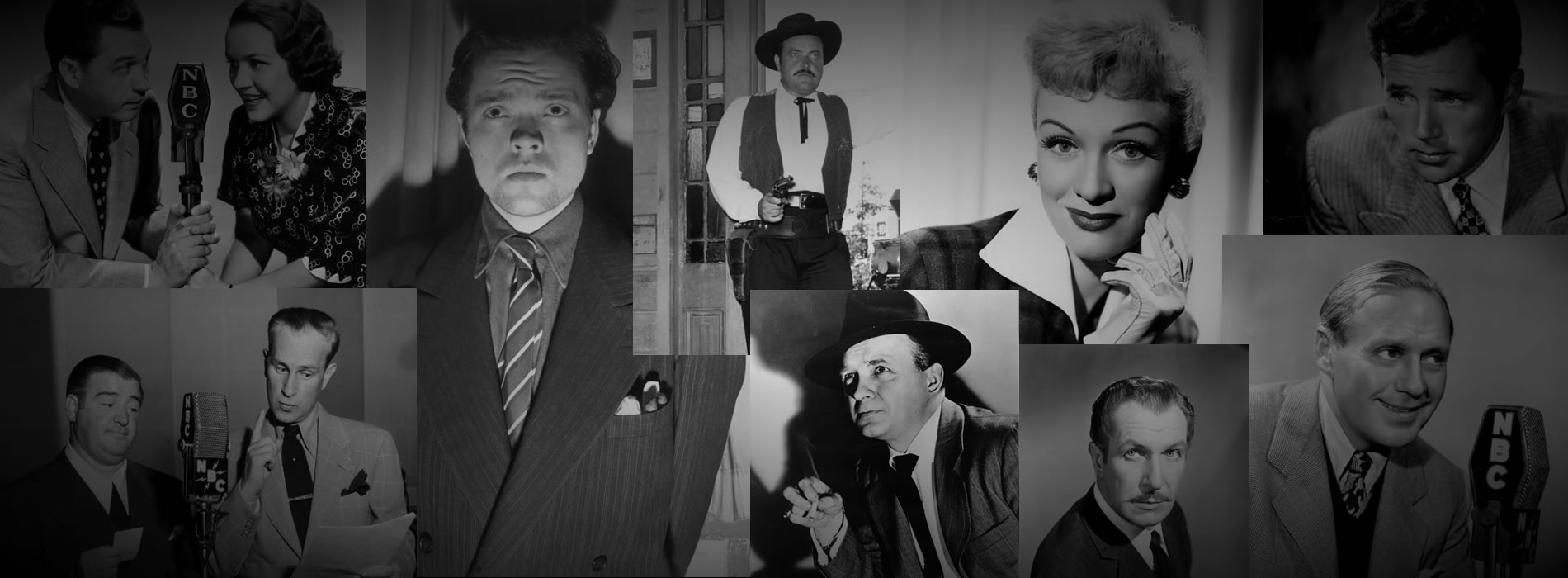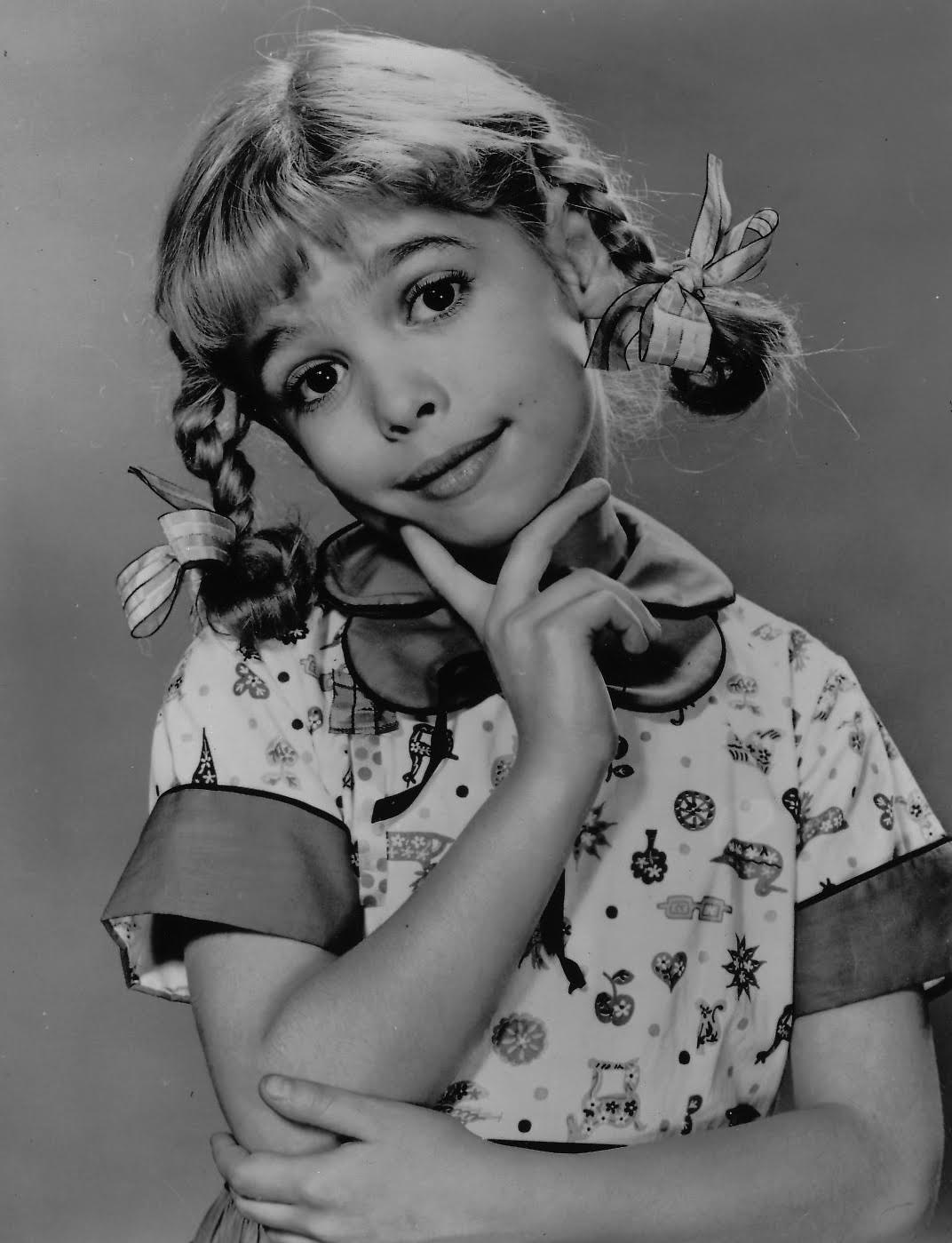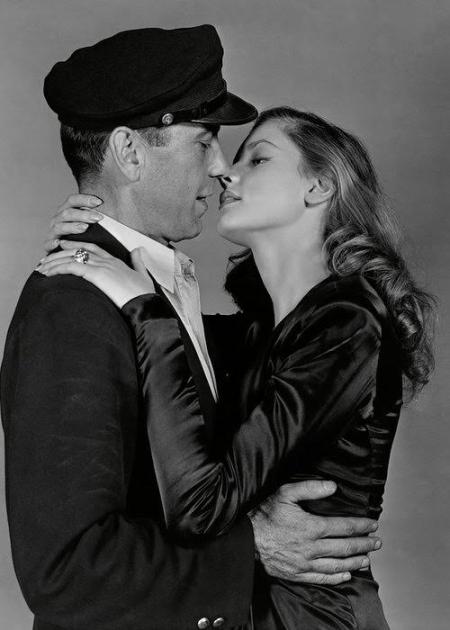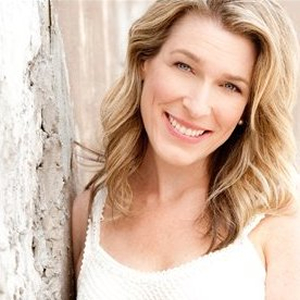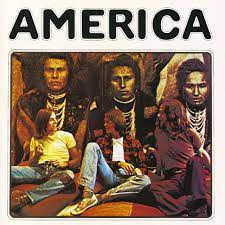
NEWSLETTER | VOL. 30, October 2023
Welcome to this month’s edition of The Hollywood 360 Newsletter, your place to get all the news on upcoming shows, schedule and interesting facts from your H360 team!
Carl’s Corner
by Carl Amari
Offering high-tension drama and a stellar cast, Suspense was a landmark program from radio’s golden age. For 20 years, the program offered tales well-calculated to keep you in … Suspense!
With audience numbers in the millions, Suspense ranked as one of the most listened-to drama programs on the air. Conceived as a potential radio vehicle for Alfred Hitchcock to direct, Suspense aired on CBS from 1942 to 1962. Known as Radio’s Outstanding Theater of Thrills it focused on suspenseful stories starring the biggest names in Hollywood.
Early in the run, the episodes were hosted by the ‘Man In Black’, who, from an omniscient perch, narrated stories of people thrown into dangerous or bizarre situations with plots that, at the very end, usually had an unseen twist or two.
Hollywood’s finest actors jumped at the chance to appear on Suspense, including: Cary Grant, James Stewart, Alan Ladd, Henry Fonda, Humphrey Bogart, Bette Davis and Orson Welles. Often times, celebrities were cast against-type including Jack Benny who played a Martian and Frank Sinatra who played a psychopathic killer. Scripts were by John Dickson Carr, Lucille Fletcher, James Poe and many others.
Running more than 20 years, Suspense aired nearly 1,000 radio broadcasts. It made the transition to television in 1949, but it was much better suited for radio where the theatre of the mind could run free.
SPECIAL ANNOUNCEMENT!
WILL YOU HELP ME (CARL AMARI) SAVE THE RADIO SERIES BOLD VENTURE – STARRING HUMPHREY BOGART AND LAUREN BACALL?
LEND ME YOUR EARS by Lisa Wolf A HORSE WITH NO NAME, by America
RELEASED: 1971
Click here to watch on YouTube.
“With its lyrics of feeling ‘good to be out of the rain’, the meaning of the song was rooted in escape from the drudgery of everyday life in the city – not promoting drug use, as a Kansas City radio station that banned it wrongly assumed [‘horse’ being a slang term for heroin]. I’d spent time in the desert and always loved nature, and being in rainy old England, maybe I mentally gravitated back towards all of that.” ~ Dewey Bunnell, Composer
“A Horse with No Name” is a classic song by America. Released in 1971, it was written by band member Dewey Bunnell. The song became America’s most recognizable and enduring track, spending three weeks at number one on the Billboard Hot 100 chart.
The inspiration for the song stemmed from Bunnell’s memories of his childhood, especially the time he spent in the deserts of Southern California.
Interestingly, despite its fame and association with the American Southwest, the song was actually composed and first became a hit in the UK. Due to its success there, it was later released in the U.S. where it also received widespread acclaim.
Popular media plays a crucial role in keeping classics alive. “A Horse with No Name” has been featured in numerous films, TV shows and commercials. Its inclusion in “Breaking Bad” and “Friends” introduced the song to younger audiences, ensuring its relevance across generations.
Breaking Bad Clip – Click here to watch on YouTube.
“Friends” Clip – Click here to watch on YouTube.
Carl’s note: On October 7th, we’ll present a BABY SNOOKS & DADDY Halloween radio episode, so don’t miss it. Here’s a terrific article on Baby Snooks written by the late, great Jim Ramsburg and reprinted with permission from his family:
BABY SNOOKS
by Jim Ramsburg
Fanny Brice was Network Radio’s most successful solo comedienne. Her poster child for mischief, Baby Snooks, was partly or wholly responsible for shows registering eight Top 20 seasons, four of them in the Annual Top Ten. No one really knows Snooks’ age or where she was born. Brice claimed that Snooks originated as a caricature of silent screen child star Baby Peggy Montgomery in a 1912 vaudeville sketch. That’s questionable because Baby Peggy wasn’t born until 1918. Brice historians trace the character’s origin to her husband Billy Rose’s 1931 revue Sweet & Low and the sketch Babykins in which Brice played a 3 year old in a highchair. Snooks’ official stage debut came three years later in The Ziegfeld Follies of 1934 when Brice appeared in the sketch Baby Snooks written by Dave Freedman. Daddy was played by Victor Marley and Mummy by 26 year old Eve Arden who was making her first New York stage appearance. There’s no question about Snooks’ birthday on Network Radio. She was first heard on NBC’s revival of The Ziegfeld Follies of The Air on Saturday, February 29, 1936. Ziegfeld was a lavishly produced series but lost its time period to Your Hit Parade on CBS. Brice left the show after ten broadcasts and the program was cancelled in June. Brice starred in another radio show during the fall of 1936 – Frank & Anne Hummert’s Revue de Paree, akaFollies de Paris, a short lived series on Blue’s Wednesday schedule at 8:00 opposite NBC’s One Man’s Family. The Barbour family serial tripled Revue’s ratings and Brice left the Hummert show after 13 weeks. As biographer John Kenrick points out, Fanny Brice could have easily retired at 46. Her real estate holdings and show business success had resulted in a comfortable income plus a luxurious Manhattan townhouse and country home on Long Island. But the General Foods/MGM Thursday night hour on NBC, Good News of 1938, had made an immediate splash in the 1937-38 season. The big budgeted show offered Brice $5,000 a week, ($82,000 in today‘s money), for just a few minutes’ appearance each week as Baby Snooks and occasional sketches as herself. So, she left for Hollywood, a new mansion on two acres in Holmby Hills and joined Frank Morgan as part of Good News’ permanent cast on December 23, 1937. Good News also introduced Hanley Stafford in the role of Snooks’ frustrated Daddy – a role he held for the next 14 years. Stafford, actually eight years younger than Brice, was no stranger to Network Radio. After five years of minor roles on a number of programs, he easily won the audition for Lancelot Higgins and two years later took on the additional continuing role of blustery J.C. Dithers in the comic strip based sitcom Blondie for the length of its network run until 1950. His value as Daddy was recognized in 1945 when he signed a contract to continue the role at $1,000 a week – ($13,000 in today’s money). Good News replaced Maxwell House Showboat on NBC’s Thursday night schedule. It was billed as General Foods’ “star filled spectacular” to compete with Major Bowes’ Original Amateur Hour on CBS. Although critics considered it a loosely constructed, hour-long promotion for MGM films and stars, Good News of 1939 became a Top Ten show in its second season, beating Bowes. But in its third season, Bowes edged out Good News of 1940 and General Foods became disillusioned with the show’s costs and increasing demands made by MGM. Good News was cut back to 30 minutes in March,1940, and cancelled in July. With its ties to MGM dropped, General Foods split its Thursday night hour into two, 30-minute comedy shows, Maxwell House Coffee Time starring its two Good News regulars, Fanny Brice and Frank Morgan, followed by its sitcom that had a promising first season on Blue, The Aldrich Family. It proved to be a winning combination, both comedies finished in the Annual Top Ten for the next three seasons. Maxwell House Coffee Time with singing host John Conte was actually two shows in one. Morgan’s sketch took the first half and after a song by Conte came the weekly adventure of Brice’s Baby Snooks and Daddy. Over its four season run, Maxwell House Coffee Time with Brice and Morgan averaged a substantial 21.1 rating.Then General Foods made a move that left many asking Snooks’ catch-phrase question, “Whyyy?” It broke up the successful Brice-Morgan duo in the fall of 1944. Morgan was given the Thursday night Maxwell House Coffee Time on NBC and Brice was moved to CBS on Sunday night at 6:30 ET. Brice’s new Toasties Time added cast members along with Stafford’s Daddy. Most prominent of the group were Lois Corbet , followed by Arlene Harris, as Mummy, then Leone Lecoux as Snooks’ babbling baby brother Robespierre. The half hour sitcom was designed as the lead-in to The Kate Smith Hour which General Foods had moved from its successful Friday night slot to blunt Jack Benny’s ratings at 7:00 on NBC.It was all part of General Foods’ scheme to retaliate against Benny who had abandoned his ten year association with the company for American Tobacco sponsorship. But the plot backfired. Meanwhile, Brice’s 1943-44 Maxwell House Coffee Time rating of 19.9 fell over 50% to 9.6 – from 13th to 79th place – against The Great Gildersleeve on NBC, a Top 25 show. General Foods rechristened Toasties Time as The Baby Snooks Show for the 1945-46 season and Brice’s ratings edged up to 11.2 and 49th place, but still trailed Gildersleeve which had become a Top 20 show. Worse yet, the stress was beginning to take its toll on the 54 year old comedienne who was sidelined by illness for half a dozen shows during the year.Finally, General Foods rescued Brice from her Sunday night dilemma in September, 1946, and moved The Baby Snooks Show to CBS on Friday at 8:00 ET where it became the night’s most popular program. (An episode is also posted below.) Her subsequent 1947-48 season resulted in a 17.3 average rating, the highest she had enjoyed since her Maxwell House Coffee Time years – again CBS’s top rated show of the night. As her reward, General Foods cancelled the show. Brice was 56, nearing half a century in show business and tired. The 1948-49 season was the first in 13 years without Baby Snooks. Once again Fanny Brice had retired. And once again a major advertiser was about to lure her back into radio.This time it was Lewis-Howe, manufacturers of Tums antacid tablets, which had lost its popular A Date With Judy to Revere Cameras and ABC, leaving it with a vacancy on NBC’s Tuesday schedule at 8:30 p.m. ET. It needed a comedy show – preferably one with a built in audience – to blend into NBC’s blockbuster hour of Bob Hope and Fibber McGee & Molly. Fanny Brice had the name, the established supporting cast and the popularity with audiences – but unfortunately, not the health for a full season’s work. She finally agreed to a 26 week series beginning on November 8, 1949.The return of Baby Snooks was a success. The well crafted and tightly produced sitcom rounded out NBC’s sweep of the first four spots in Tuesday night’s ratings and Brice was again a Top 20 attraction. What’s more she had the strength and confidence to increase her 1950-51 commitment to a full season of 39 shows. Brice lost over 25% of her audience during the 1950-51 season. That wasn’t surprising because the average Top 50 program lost at least 20% – a loss directly attributable to the growing competition of television. But Baby Snooks was the only Network Radio comedy show pitted directly opposite NBC-TV’s Texaco Star Theater starring Milton Berle, the highest rated of all television programs with a whopping 61.6 Nielsen average. Nevertheless, Brice finished in Tuesday’s Top Ten. That broadcast is notable because three weeks later, on May 24th, Fanny Brice suffered a stroke. She died five days later at age 59 on the date of what would have been her 34th show of the season. Hanley Stafford said of his longtime star on the memorial program on that night of May 29th, “Fanny Brice was a very real, a very warm and a very wonderful person.”Her loss was mourned by Network Radio and a nation of listeners. George Jessel put it best in closing his eulogy at her funeral by softly saying, “Baby Snooks has gone to sleep.”
HOLLYWOOD 360 Broadcast Schedule for October 2023 (episodes subject to change):
10/7/23
BABY SNOOKS & DADDY 11/1/46 Snooks Not Allowed Out on Halloween
SUSPENSE 4/10/47 Community Property
LIGHTS OUT! 3/23/43 The Flame
MURDER BY EXPERTS 4/24/50 Conspiracy
THE WIERD CIRCLE 7/8/43 The Fall of the House of Usher
10/14/23
LIVE INTERVIEW: Evelyn Rudy
SUSPENSE 5/18/58 Zero Hour
MY FAVORITE HUSBAND 10/28/49 Halloween Surprise Party
THE SHADOW 5/22/38 The Message From the Hills
CABIN B-13 12/26/48 The Sleep of Death
THE BLACK MUSEUM 3/18/52 The Door Key
10/21/23
THE GREAT GILDERSLEEVE 11/1/56 Jolly Boys Haunted House Adventure
THE NEW ADV. OF SHERLOCK HOLMES 9/3/45 The Limping Ghost
OUR MISS BROOKS 10/30/49 Halloween Party
INNER SANCTUM MYSTERY 6/4/46 Eight Steps to Murder
QUIET PLEASE! 12/5/48 A Very Unimportant Person
10/28/23
BLONDIE 10/27/48 Blondie and the Halloween Spirit
SUSPENSE 5/31/45 August Heat
THE SEALED BOOK 5/27/45 I’ll Die Laughing
LIGHTS OUT! 12/29/42 Valse Trist
THE HAUNTING HOUR 9/5/52 Shadow People
TO RECEIVE A WEEKLY EMAIL (EVERY MONDAY) WITH THE FULL 5-HOUR HOLLYWOOD 360 SHOW AND 40-MINUTE RADIO RARITIES PODCAST VIA DIGITAL DOWNLOAD LINKS THAT NEVER EXPIRE, LOG ON TO: hollywood-360-weekly-podcast-subscription

